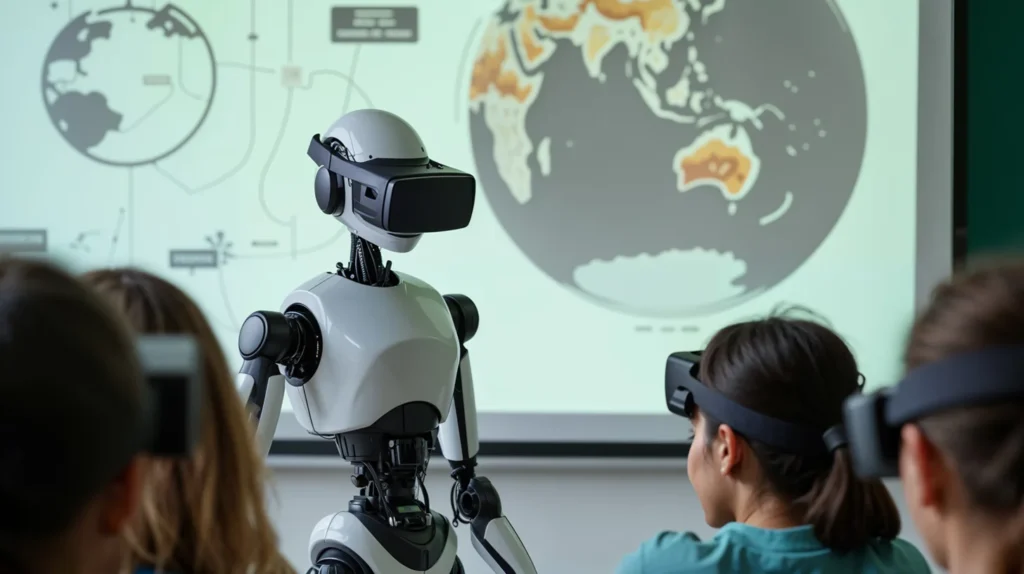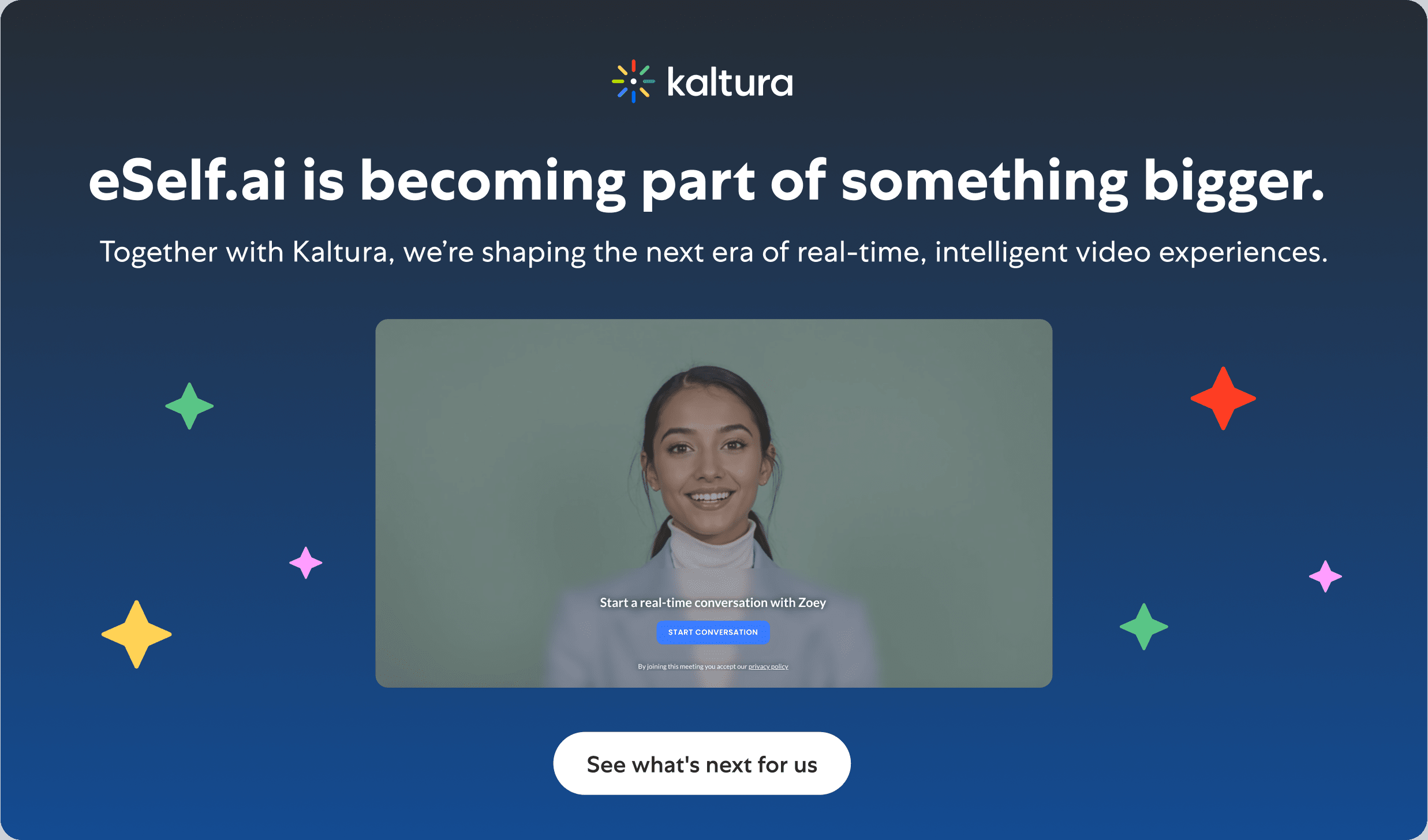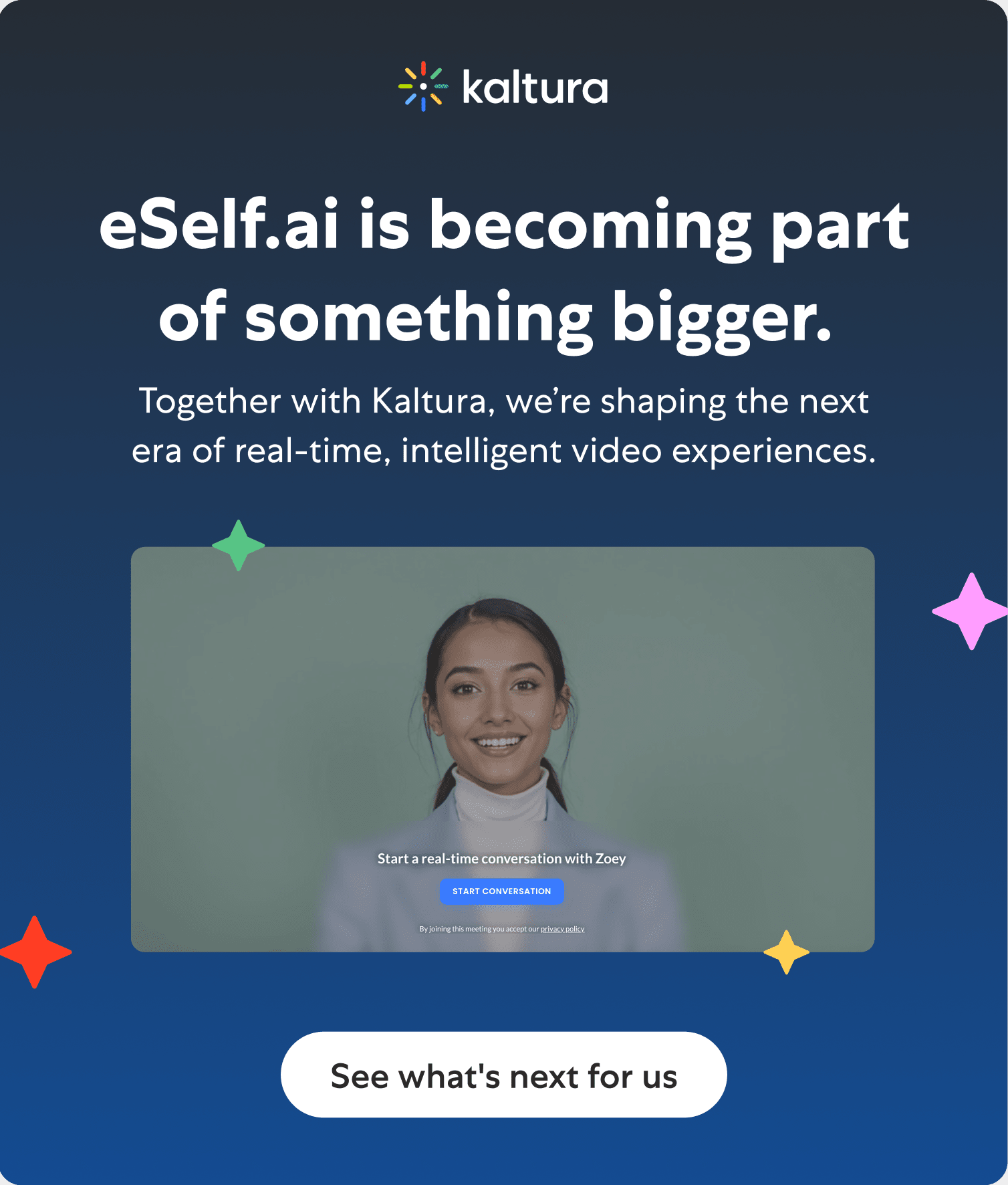Artificial intelligence (AI) is rapidly transforming the landscape of education, influencing how students learn, how teachers teach, and how institutions operate. As these technologies become more integrated into classrooms and administrative systems, it’s crucial to understand not only the benefits AI brings but also the risks and challenges it introduces.
This article explores the evolving role of AI affecting education — its positive effects, its potential downsides, and what educators and institutions can do to ensure its responsible use.
The Impact of AI on Education Today
Artificial intelligence is reshaping education in real-time — changing how classrooms operate, how content is delivered, and how students interact with their learning environments.
The impact of AI on education and its growing presence in schools raises both opportunities and new responsibilities. From personalized instruction to administrative automation, AI is playing an increasingly central role in both teaching and institutional strategy.
How AI Is Changing the Classroom Experience
AI tools like smart boards, speech recognition systems, and adaptive quizzes increase student engagement and streamline teaching. These tools demonstrate how AI affects education by transforming passive classrooms into interactive, personalized learning environments.
In China, classrooms use AI-powered facial recognition to measure student attention, helping teachers adjust their instruction in real time.
For instance, Hangzhou No. 11 High School equipped classrooms with cameras capable of recognizing students’ emotions, such as happiness, sadness, and surprise. These systems automatically track student behaviors like reading, writing, and listening, providing real-time data to teachers to adjust instruction accordingly.
The school’s vice principal noted that the system not only motivated students to study harder but also helped supervise the quality of teaching.
Additionally, Professor Wei Xiaoyong at Sichuan University utilized facial recognition technology to detect student boredom during lectures. By analyzing facial expressions, the system helped identify disengaged students, enabling the professor to modify teaching strategies in real time.
AI in Personalized Learning and Assessment
Through real-time analytics, AI can monitor student performance and suggest personalized resources, assignments, or challenges. This makes learning more flexible, allowing students to progress at their own pace while receiving support exactly when needed.
In China, AI-powered adaptive learning systems have demonstrated significant improvements in student academic performance by tailoring instruction to individual learning patterns and helping students overcome specific knowledge gaps.
This personalization illustrates the powerful impact of AI in education — from improving learner outcomes to enhancing engagement.
Use of Chatbots and Virtual Tutors
Another key example of how AI affects education is AI-powered chatbots and virtual tutors are available 24/7, answering student queries, assisting with homework, or providing supplemental instruction. These tools extend learning beyond the classroom and reduce dependency on teacher availability.
For instance, Georgia State University uses a chatbot named Pounce that helped reduce summer melt by over 20% by responding to incoming students’ questions in real time.
AI in Administrative and Curriculum Planning
AI simplifies backend operations by automating attendance, grading, and curriculum updates. Administrators use AI to predict enrollment trends, monitor student success rates, and adjust course offerings based on performance data.
AI automates administrative tasks and curriculum design, helping institutions allocate resources better and update learning materials based on student performance trends. These are core examples of the effects of AI on education systems and institutional management.
Universities may use AI-powered analytics systems to identify students who may be at risk of dropping out, enabling timely interventions that have led to noticeable improvements in student retention.
Advantages of AI in Education
AI effects on education brings a wide range of benefits to both students and educators by making learning more personalized, efficient, and inclusive. If you’re wondering how does AI affect education, the answer lies in its ability to transform traditional methods.
Artificial intelligence offers schools and institutions a chance to reimagine how they deliver learning and support students. It can help improve educational outcomes, reduce manual workload, and bridge accessibility gaps — clearly illustrating the AI effects on education in real time.
Schools can now go a step further by creating their own AI-powered teachers using platforms like eSelf.ai. The AI teachers can deliver lessons, answer questions, and support learners 24/7—enhancing engagement while scaling personalized education across classrooms and devices.
Adaptive Learning for Diverse Student Needs
AI systems adapt in real time to each student’s pace, ability, and learning style. This enables teachers to offer differentiated instruction at scale — something that’s hard to achieve manually. By closing learning gaps more efficiently, institutions can improve outcomes across a wider spectrum of student needs, from gifted learners to those requiring additional support.
This is a strong example of how AI is affecting education by supporting personalized learning pathways and demonstrating how AI affects students on an individual level.
Enhanced Efficiency for Teachers and Institutions
From grading to attendance to progress reporting, AI automates time-intensive tasks that typically strain staff resources. For teachers, this means more time for one-on-one instruction and creative planning. For school leaders, it offers cost savings, streamlined workflows, and improved data accuracy for strategic decisions – further showing how AI affects education system-wide.
Real-Time Feedback and Progress Tracking
AI enables continuous monitoring of student performance through real-time dashboards and analytics, providing immediate feedback to both students and educators.
This insight helps identify learning gaps early, allowing teachers to intervene faster, personalize instruction, and communicate more effectively with parents — ultimately leading to improved student outcomes and stronger institutional accountability.
It’s one of the many ways in which AI affecting education is reshaping learning strategies.
Accessibility for Students with Disabilities
AI-powered tools such as screen readers, voice-to-text apps, and real-time translation services help remove barriers for students with disabilities.
By integrating these technologies, schools not only meet accessibility standards but also create more inclusive learning environments that support equity and full participation for all learners.
These innovations in the learning environment demonstrate another dimension of how AI is affecting education — by advancing accessibility and inclusion.
How Does AI Affect Education Negatively? Understanding the Challenges and Risks
While AI brings undeniable advantages to the education sector, it also introduces a range of complex risks of AI in education that institutions must carefully consider.
From algorithmic bias to diminished emotional interaction, the use of AI can impact learning outcomes, student wellbeing, and the broader educational environment if not thoughtfully implemented. These represent some of the most pressing problems with AI in education.
Bias and Inequality in AI Systems
When AI systems are trained on biased or incomplete datasets, they can unintentionally reinforce existing inequalities. For example, educational AI tools may prioritize mainstream content, overlooking diverse perspectives and limiting access for underrepresented groups.
This is one of the key highlights of how AI affects students differently depending on their background.
AI algorithms may reinforce bias if trained on non-diverse datasets. For example, AI book recommendation engines have been shown to favor mainstream authors while excluding minority voices, illustrating the negative impact of AI on education when inclusivity is not prioritized.
Privacy and Security Concerns
AI tools often rely on large volumes of sensitive student data to function effectively. Without proper safeguards, this opens the door to risks such as unauthorized data access, facial recognition misuse, or cyber breaches. Ensuring robust privacy protocols is essential to protect student information and maintain trust.
These concerns demonstrate the broader AI education risks schools face.
AI collects vast amounts of personal and behavioral data. Breaches or misuse can lead to surveillance concerns, such as unauthorized facial recognition or data leaks, putting student privacy at risk — another critical downside of AI in education.
Loss of Human Connection in Classrooms
The integration of AI can sometimes reduce opportunities for face-to-face interaction between students and teachers. As instructional roles shift toward automation, the emotional and relational aspects of education—like motivation, mentorship, and peer bonding—may be compromised.
As AI replaces more interpersonal teaching roles, students risk losing valuable face-to-face interactions. This lack of connection may reduce motivation and emotional engagement in the classroom, highlighting why AI is bad for students in some contexts.
Reduced Critical Thinking and Problem-Solving Skills
Students who overuse AI tools for tasks like writing or problem-solving may bypass essential cognitive processes. Relying on AI-generated responses can hinder the development of original thought and analytical skills, weakening their long-term ability to think critically and solve real-world problems.
Heavy reliance on AI tools like ChatGPT can limit students’ cognitive development. For example, students using AI to write essays may bypass essential learning processes.
This trend reveals how AI affects education negatively by encouraging dependency rather than independent thought.
Emotional Intelligence and Human Interaction Deficit
Unlike human educators, AI cannot interpret complex emotions, mediate conflict, or offer compassionate guidance. In emotionally charged or socially sensitive situations, students may not receive the support they need—limiting their development in emotional intelligence and interpersonal communication.
AI cannot replicate empathy or understand complex emotional cues. AI tutors may fail to recognize students in distress or mediate social conflict effectively, hindering emotional development.
AI Challenges for Teachers and Educational Institutions
AI integration in education introduces complexities that educators and institutions must navigate. These challenges reflect technological and financial concerns and require careful consideration to mitigate negative impacts of AI on education.
Dependence on Technology
Overreliance on AI tools can reduce teacher autonomy and student independence. Creative flexibility in lesson planning and human nuance in assessment may be lost. This highlights more problems with AI in education that must be addressed.
Errors and Unpredictability in AI Systems
AI systems may misgrade or misinterpret student input due to flawed data or programming. These inaccuracies erode trust in AI tools and create unfair academic outcomes.
High Implementation and Maintenance Costs
Setting up and maintaining AI infrastructure requires high upfront investment and ongoing support. Budget-constrained schools may struggle with access and sustainability. The cost burden is a significant contributor to the disadvantages of AI in education, especially for underfunded districts.
Job Displacement and Role Redefinition in Education
AI adoption raises concerns about replacing teaching assistants, graders, or administrative staff. This shift demands reskilling and redefining educator roles in AI-integrated environments.
Mitigating the Negative Effects of AI in Education
Addressing AI’s negative impacts on education requires a collaborative and thoughtful approach. By fostering responsible usage, educators and institutions can maximize the benefits while minimizing the drawbacks.
- Encouraging Teacher Involvement and Oversight:
Teachers must stay central to AI-powered learning, providing oversight and adapting AI insights into meaningful instruction. Teacher training programs can help educators evaluate and supplement AI tools.
- Promoting Digital Literacy for Students and Teachers:
Equipping both students and teachers with digital skills allows them to critically assess AI outputs and use these tools responsibly, reducing blind dependence on algorithms.
- Ensuring Data Transparency and Ethical AI Practices:
Schools should clearly communicate data collection practices, enforce strict privacy protocols, and adopt AI tools aligned with ethical and inclusive standards.
Conclusion
The impact of AI in education is undeniable — it’s reshaping how we teach, learn, and manage institutions. But with great potential comes great responsibility. While AI can personalize learning, automate tasks, and expand access, it also raises concerns about privacy, equity, and the human connection in classrooms.
To truly benefit from AI, educators and institutions must take an intentional approach: one that prioritizes transparency, ethical design, and active human oversight. The future of education shouldn’t be AI-driven — it should be AI-enhanced, supporting students and teachers without replacing the heart of education: real human engagement, critical thinking, and meaningful connection.
FAQs About How AI Affects Education
What are the main challenges of AI in education?
Some challenges include overdependence on technology, loss of human interaction, biases in AI systems, data privacy concerns, and the high costs of implementation, which can lead to inequalities in adoption.
Can AI replace teachers in education?
No, AI cannot replace teachers. While it can assist with routine tasks and personalized learning, it lacks emotional intelligence and the ability to build meaningful relationships essential for effective teaching.
Does AI affect students’ critical thinking skills?
Yes, overdependence on AI may impair students’ critical thinking and problem-solving skills. They may rely on technology to find answers instead of developing independent reasoning abilities.
Is AI in education safe for student data?
AI poses potential risks to student data privacy. Without proper governance and transparency, sensitive student information may be vulnerable to breaches or unauthorized use.
How can schools address AI biases?
Schools should critically evaluate AI systems, ensure diverse data inputs during development, and involve educators in oversight processes to mitigate biases and assuring fairness in AI-driven outcomes.
Is AI cost-effective for schools?
Implementing AI can be costly due to advanced technology requirements, staff training, and ongoing maintenance. Financial barriers may prevent equitable adoption across all schools.
Can AI foster creativity in education?
AI can aid creativity by automating repetitive tasks and freeing up time for innovative teaching approaches, but excessive dependency may hinder flexibility and human-driven creativity in learning processes.
How can teachers adapt to AI in education?
Teachers can adapt by attending professional development programs, improving their digital literacy, and learning to evaluate AI tools to enhance their teaching methods effectively and critically.
What steps can improve AI use in education?
Key steps include promoting digital literacy, maintaining transparency in data practices, and adopting ethical AI tools. Schools should prioritize teacher-student interaction and balance AI integration with traditional teaching methods.
Why would the use of AI in education result in a lack of personal interaction?
AI often automates tasks like instruction, feedback, and support—reducing direct communication between students and teachers. This can limit emotional connection, mentorship, and peer collaboration. Over time, it may affect student engagement and the development of interpersonal skills essential to the learning experience.
What are the dangers of overreliance on AI in higher education?
Overreliance on AI can reduce human interaction, limit critical thinking, and introduce bias in grading. It may also undermine independent learning, ultimately affecting student success. Artificial Intelligence should support — not replace — human guidance in education.
How can teachers balance the use of AI tools with traditional teaching methods?
Teachers can balance AI tools with traditional methods by using AI to enhance—not replace—core teaching practices. For example, AI can automate grading, personalize learning paths, or provide instant feedback, freeing up time for more human-centered instruction like class discussions, mentorship, and hands-on activities. The key is to integrate AI in ways that support educational goals while maintaining personal connection, critical thinking, and classroom engagement.


